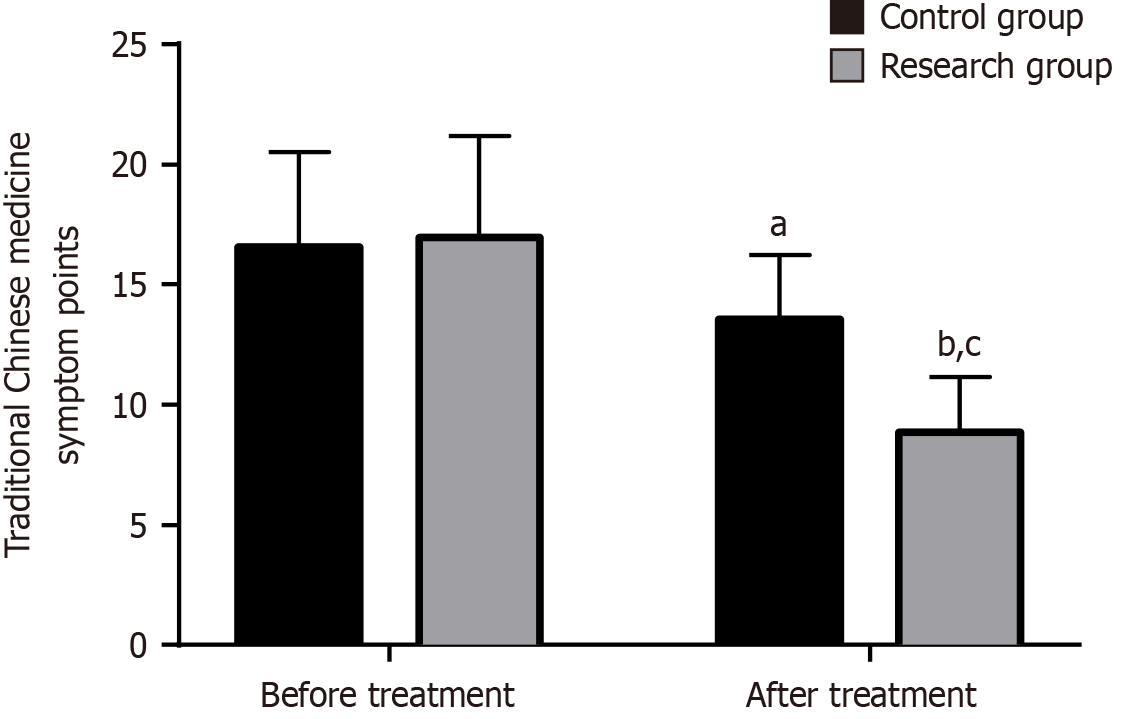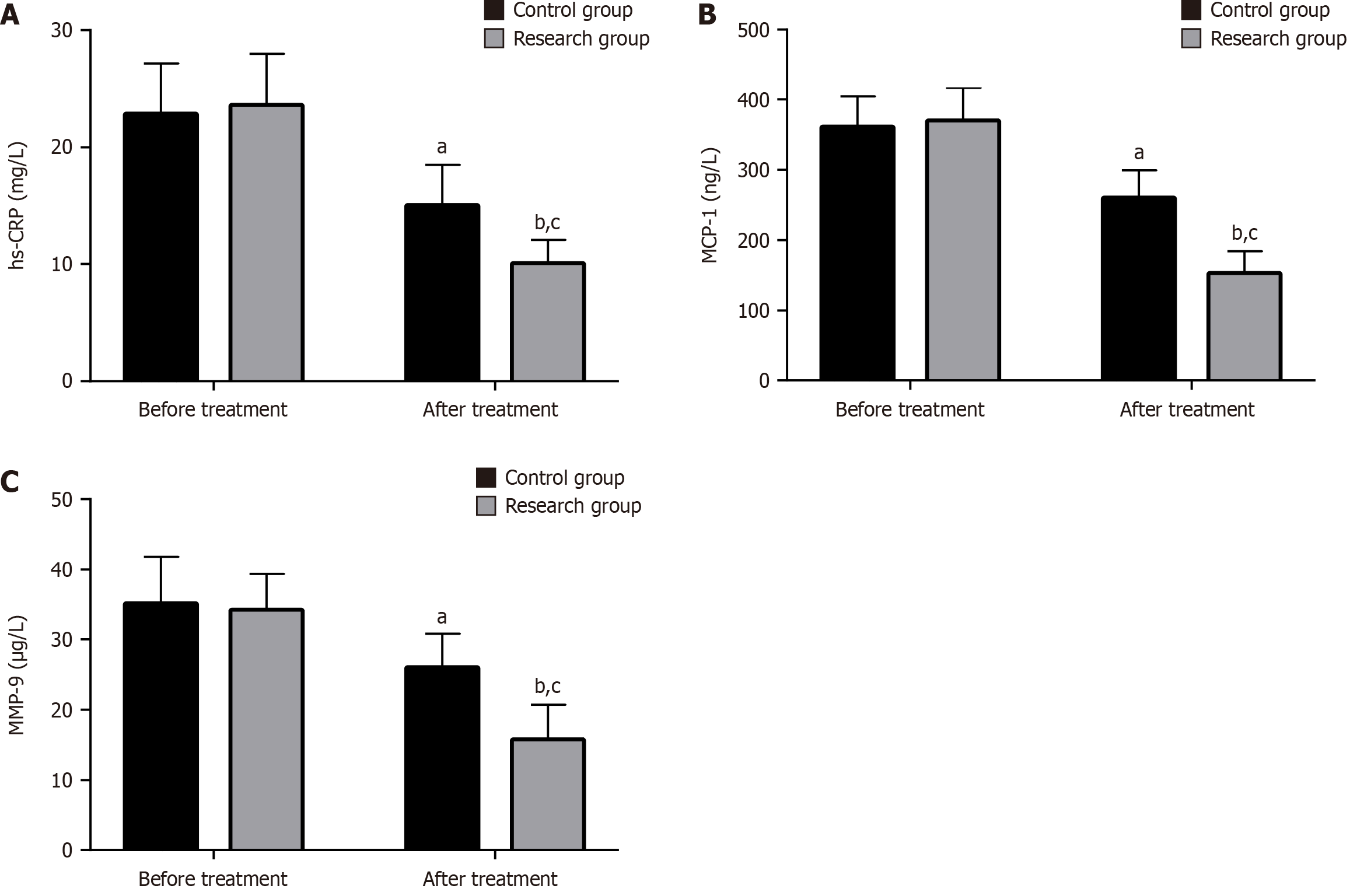Copyright
©The Author(s) 2024.
World J Psychiatry. Jun 19, 2024; 14(6): 857-865
Published online Jun 19, 2024. doi: 10.5498/wjp.v14.i6.857
Published online Jun 19, 2024. doi: 10.5498/wjp.v14.i6.857
Figure 1 Traditional Chinese medicine symptom score.
aP < 0.05 and bP < 0.01 vs before treatment; cP < 0.05 vs control group.
Figure 2 Cardiac function.
A: Left ventricular ejection fraction in both groups increased significantly after treatment; B: Left ventricular end-diastolic diameter in both groups decreased significantly after treatment; C: Both groups showed significantly reduced Left ventricular end-systolic diameter after treatment. aP < 0.05 and bP < 0.01 vs before treatment; cP < 0.05 vs control group. LVEF: Left ventricular ejection fraction; LVEDD: Left ventricular end-diastolic diameter; LVESD: Left ventricular end-systolic diameter.
Figure 3 Negative emotions.
A: Both groups had significantly reduced Self-Rating Depression Scale scores after treatment; B: Both groups had significantly reduced Hamilton Depression Scale scores after treatment. aP < 0.05 and bP < 0.01 vs before treatment; cP < 0.05 vs control group. HAMD: Hamilton Depression Scale; SDS: Self-Rating Depression Scale.
Figure 4 Serum inflammatory factors.
A: Levels of high-sensitivity C-reactive protein in both groups decreased significantly after treatment; B: Levels of monocyte chemoattractant protein-1 in both groups decreased significantly after treatment; C: Levels of matrix metalloproteinase-9 in both groups decreased significantly after treatment. aP < 0.05 and bP < 0.01 vs before treatment; cP < 0.05 vs control group. hs-CRP: High-sensitivity C-reactive protein; MCP-1: Monocyte chemoattractant protein-1; MMP-9: Matrix metalloproteinase-9.
- Citation: Wang Y, Wang J, Lv W, Chen H, Yang Q, Zhang Y, Guo R, Ma XL, Zhang QY. Clinical intervention effect of Xuefu Zhuyu decoction on chronic heart failure complicated with depression. World J Psychiatry 2024; 14(6): 857-865
- URL: https://www.wjgnet.com/2220-3206/full/v14/i6/857.htm
- DOI: https://dx.doi.org/10.5498/wjp.v14.i6.857












